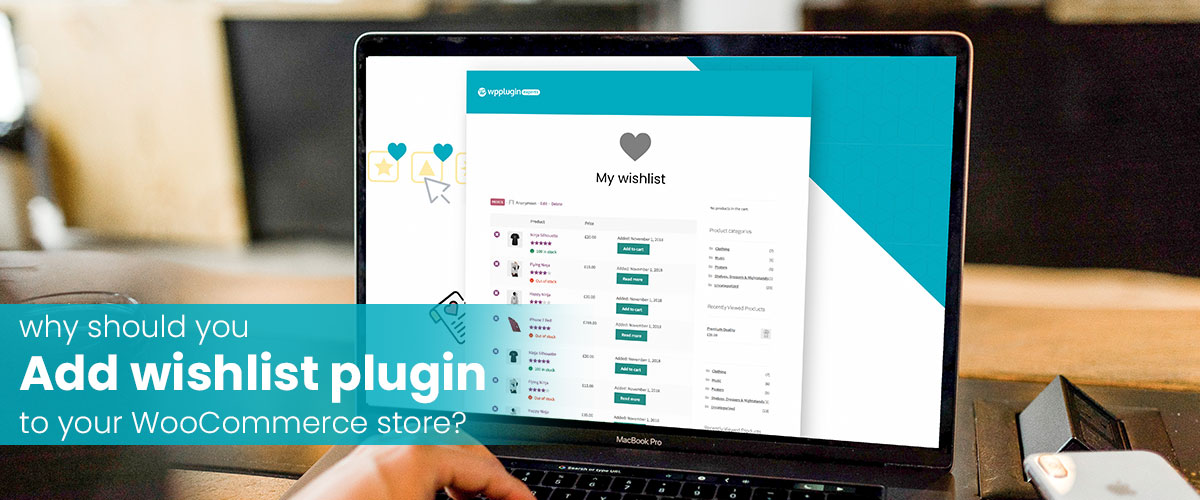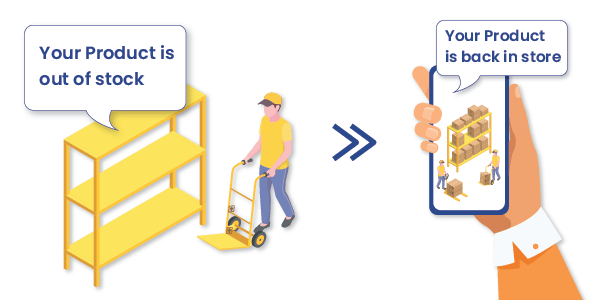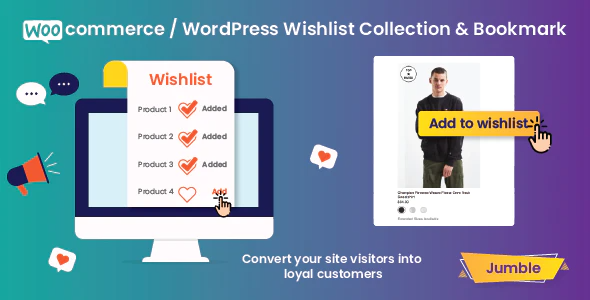
Online shoppers benefit immensely from numerous features that a modern-day E-Commerce store offers. One such useful feature that they prefer using regularly is a wishlist. If a customer is not yet ready to buy a product they can put it in the wishlist for purchasing it later. It acts as a magnet for site visitors to come back again at a later date to buy the products they saved in the wishlist.
Table of Contents
- What is a Wishlist?
- The importance of wishlist for an eCommerce store
- Wishlists share a lot about purchase behavior
- Wishlist plugins can assist in better inventory management
- Wishlist provides a sneak peek about customer shopping behavior
- Installing a Wishlist plugin can accelerate sales and conversion
- Overview of Jumble – WooCommerce / WordPress Wishlist Collection & Bookmark Plugin
- Conclusion for need a Wishlist Plugin
- Frequently Asked Questions
What is a Wishlist?
A wishlist allows people who have logged in to an eCommerce site, to collect items they would love to purchase online. It is one section on the site that is a personalized collection of the products they want to purchase. This way, when they are ready to purchase the products, they don’t need to find it on the site, as these are already present in the wishlist.
Be it products like clothing, electronic appliances, accessories or even services, users can add these into the wishlist that they can purchase later. This is why plugins like WooCommerce Wishlist plugin come in handy.
For an eCommerce business, the WooCommerce Wishlist Plugins will be able to convert site visitors to repeat visitors and potential customers. It allows sellers to monitor preferences and better meet customer needs. It also helps boost site traffic and converts leads into paying customers.
Value addition Wishlist’s deliver to customers include –
- Quick price comparison
- Share with friends and family, a list of items you intend to purchase
- Get an impetus to come back to the site to buy the items you have picked
The importance of wishlist for an eCommerce store
The obvious benefit of a Wishlist is to elevate the overall shopping experience. Commonly, customers create wishlists to plan ahead for their purchases for an upcoming occasion like a wedding or Christmas holidays. This way they need not hustle at the last moment to buy the right products they need. Such reminder lists also work for the business owners.
An online retailer will derive strategic value to the business with such wishlists integrated into their eCommerce store. While they help mobile shoppers save time on buying products from a smaller screen, they also help in improving the user experience. Here are some ways how a wishlist adds value to the customer.
Wishlists share a lot about purchase behavior
Wishlists go a long way in helping an eCommerce store owner to serve their customers better. They provide in-depth insights for what the customers wants and what things make them happy. As a result, marketers can design personalized marketing messages that establish a better connection with the audience. This also helps in boosting cross-selling and upselling opportunities for the business owner.
Wishlist plugins can assist in better inventory management

Customer attrition due to out of stock items can harm the reputation of an eCommerce site. Integrating a wishlist feature helps alleviate this problem to a great extent. Business owners can present an opportunity for customers to get their hands on the ‘out of stock’ item. They can inform customers that they will be alerted via mobile or email once the item is back in stock.
Wishlist provides a sneak peek about customer shopping behavior
As a business owner, you may want to mention that you know the bestselling products on your site. But a wishlist can enable a far deeper level of analysis into customer shopping behavior. They factor in a lot of variables before going ahead with the purchase. So if you see a lot of the same products added into many wishlists you can assume correctly that there is some variable like the price, popularity etc. which is impeding the eventual decision for buying it.
Installing a Wishlist plugin can accelerate sales and conversion

Many shoppers use the wishlist plugin to add items for future flash sale opportunities. When you get this insight, you can send targeted messages prior to the sale. As a result, you can successfully lure them back in and convince them to finish the purchase process. You can also analyze the data available from all wishlists across the store. You can run timely promotions and offer great deals to bring the customers one step closer to their purchase process.
Overview of Jumble – WooCommerce / WordPress Wishlist Collection & Bookmark Plugin

The Jumble Wishlist Plugin offers incredible flexibility to online shoppers to extend the utility of the wishlist. It helps them to share with others, the products they see and choose online. The key USP is its robust set of features; No plugin other than Jumble Wishlist lets you add any page or custom post to a wishlist.
This provides users the ability to bookmark a blog post or even a page. You can also build your own personalized wishlist using this module.
Its universal compatibility makes it a popular choice among eCommerce business owners and developers. It works with WooCommerce, Easy Digital downloads, WordPress posts/blogs and any custom post types.
Some of the key features of the Jumble Wishlist are:
• Supports all custom post types
• Create unlimited wishlist and bookmarks
• Create private and featured wishlist
• Observe users wishlists to understand their needs
• Bulk add to cart products from the wishlist
• Disable wishlist of specific user roles
• Share wishlists on Social Media and create an opportunity of indirect advertising for your store
Conclusion for need a Wishlist Plugin
In today’s world, every business owner wants to generate revenue. In this article, we have mentioned the importance of the Wishlist plugin for eCommerce stores. We at WP plugin experts created the #1 WooCommerce Wishlist plugin which helps to increase the revenue of the website as well as increase user experience. If you need any help with the Wishlist plugin feel free to share your idea in the comments section.

Frequent Ask Questions
No, Jumble plugin is not just useful for eCommerce websites but can also be used for various other types of website such as Blogging, Tutorials, Portfolio, Directory etc.
The Wishlist plugin is extremely the handy and gives quick – pick options for users to get to their choices or topics. Users do not need to refer to the whole website again to get to their favorite choices or topics.
All data relating to Wishlist’s in Jumble Wishlist Plugin will be stored in the Database.
Admin will have full access to the Wishlist plugin. Admin will be able to Delete / Edit the Wishlist, decide each of the functionalities that are needed to be enabled on his website.


